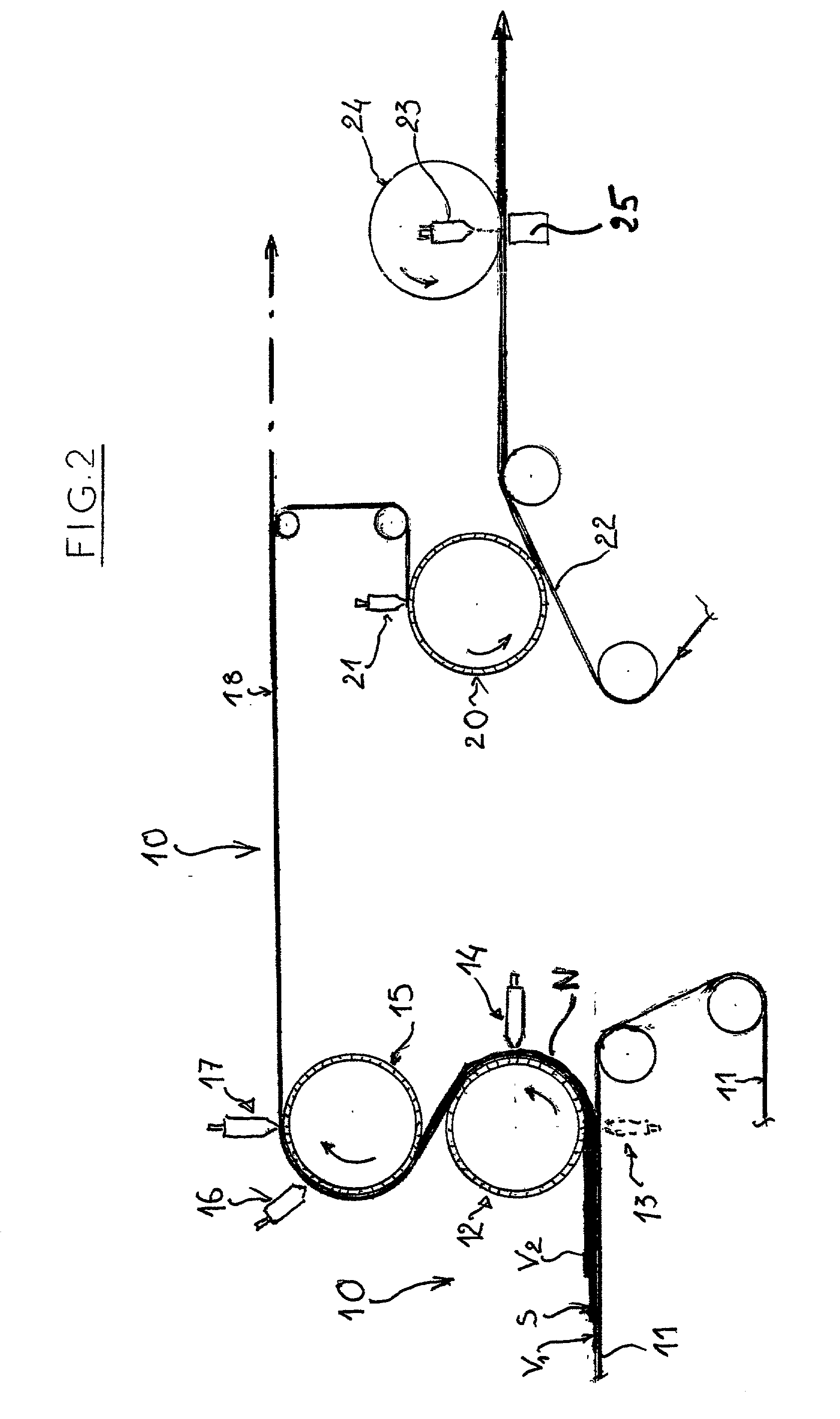Process for producing a nonwoven material, plant for implementing it and nonwoven thus obtained
a nonwoven material and process technology, applied in the direction of nonwoven fabrics, needles, textiles and papermaking, etc., can solve the problems of affecting the pliancy, the appearance of the handle and the textile, and the mechanical properties of the textile, and the technology has not been adapted
- Summary
- Abstract
- Description
- Claims
- Application Information
AI Technical Summary
Benefits of technology
Problems solved by technology
Method used
Image
Examples
example 2
[0089] This example illustrates the implementation of the process according to the invention for producing a structure composed of a "spunbond"-type web combined with a single fibrous sheet which, in this embodiment, was formed upstream of the zone in which the "spunbond"web was formed.
[0090] In accordance with the invention, the process was carried out in the following manner.
[0091] A sheet of fibers (V1) weighing 20 g / m.sup.2 and composed 100% of 1.7 dtex viscose fibers 38 mm in length, was produced by means of a conventional carding machine (6).
[0092] This sheet was produced at a rate of 150 m / min.
[0093] On leaving the carding machine (6), the sheet (V1) was transferred onto the receiving belt (5) of the spunbond unit.
[0094] A spunbond web (S) consisting of polypropylene filaments was deposited on the sheet (V1).
[0095] This 25 g / m.sup.2 spunbond web consisted of 2 dtex filaments.
[0096] The two superposed layers (V1) and (S) were compressed by means of a press roller (8) thus form...
PUM
| Property | Measurement | Unit |
|---|---|---|
| Linear density | aaaaa | aaaaa |
| Thickness | aaaaa | aaaaa |
Abstract
Description
Claims
Application Information
 Login to View More
Login to View More - R&D
- Intellectual Property
- Life Sciences
- Materials
- Tech Scout
- Unparalleled Data Quality
- Higher Quality Content
- 60% Fewer Hallucinations
Browse by: Latest US Patents, China's latest patents, Technical Efficacy Thesaurus, Application Domain, Technology Topic, Popular Technical Reports.
© 2025 PatSnap. All rights reserved.Legal|Privacy policy|Modern Slavery Act Transparency Statement|Sitemap|About US| Contact US: help@patsnap.com



